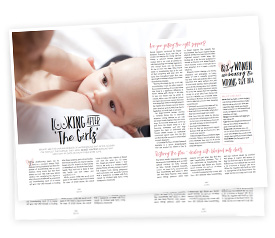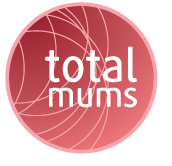 Breast are the unsung heroes of motherhood but often soldier on without the support they need. Renee Vincent explains why and how we should show them more love.
Breast are the unsung heroes of motherhood but often soldier on without the support they need. Renee Vincent explains why and how we should show them more love.
The childbearing years can be hard on a woman’s breasts. With changes during pregnancy and then the process of breastfeeding one or more children, many mums feel that their breasts are not what they were before children. Yet considering the degree to which breasts are affected by pregnancy and
breastfeeding, most of us mums still give very little thought to looking after these amazing parts of our bodies. New mums usually only stop to consider breast care if it impacts on their ability to breastfeed, and therefore their baby’s health. They tend not to think of their own health and how breast care contributes to it.
While women today are much more aware of the need to check their breasts for signs of breast cancer, this article hopes to bring other aspects of breast care onto the radar too. I’ll cover two breast-care-related topics I deal with in my work as a women’s health physio. Firstly, advising women on good bra support both during pregnancy and postnatally; and secondly, helping with a breakdown in breast milk flow, caused by blocked milk ducts, using therapeutic ultrasound.
Are you getting the right support?
Recent research conducted by Breast Research Australia found that 85% of women are wearing the wrong size bra. Facing a reduced income, pregnant women tend to cut costs by putting up with their existing bras during pregnancy, even though breast size can fluctuate by one or more cup sizes. Often they’ll invest in breastfeeding bras at the end of their pregnancy and stick with the same bras throughout baby’s first year, ignoring fluctuations in breast size as their breastfeeding changes.
Wearing the wrong size bra is not only uncomfortable, it can also affect support. Biomechanical studies of the breast show that there is a significant difference in breast volume with change in bra size. A size 10D breast may be 400ml in volume, while a size 16D may be 1500ml. As breast size increases, support becomes more important. Without the right support, the weight of the breasts can pull women into a slouched posture, which can lead to headaches and neck, back or arm pain.
For larger-breasted women, wearing a correctly fitting bra is especially important during exercise as, not only are larger breasts heavier, they also move more. As the body rotates and moves up and down, the breasts swing in a 3D bouncing movement and also slap against the chest or abdominal wall. Female breasts contain no substantial anatomical support apart from the skin and fine hair-like connective tissue called Cooper’s ligaments.
Dr Deirdre McGhee of Breast Research Australia is a sports physiotherapist who has studied the effects of bra fit on breast support. Her research has demonstrated that breast support during physical activity is an important, but often neglected, women’s health issue. Her findings led to the first ever guideline for women on Exercise and Breast Support, which educates women of all ages about how important it is to wear a correctly fitted bra.
Click here to download and read the article (pdf)
